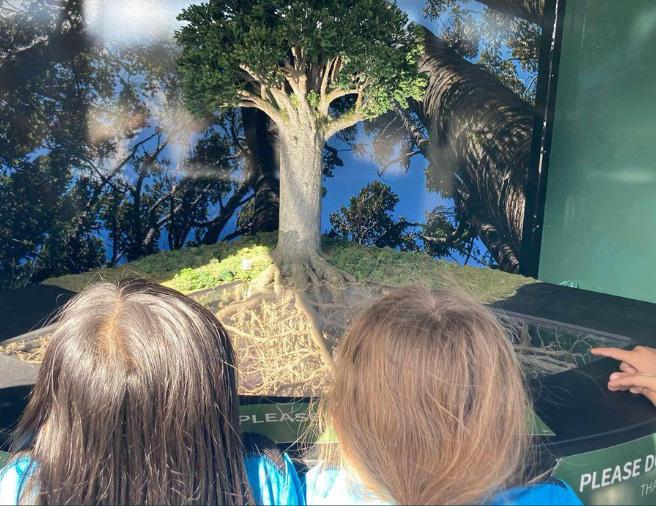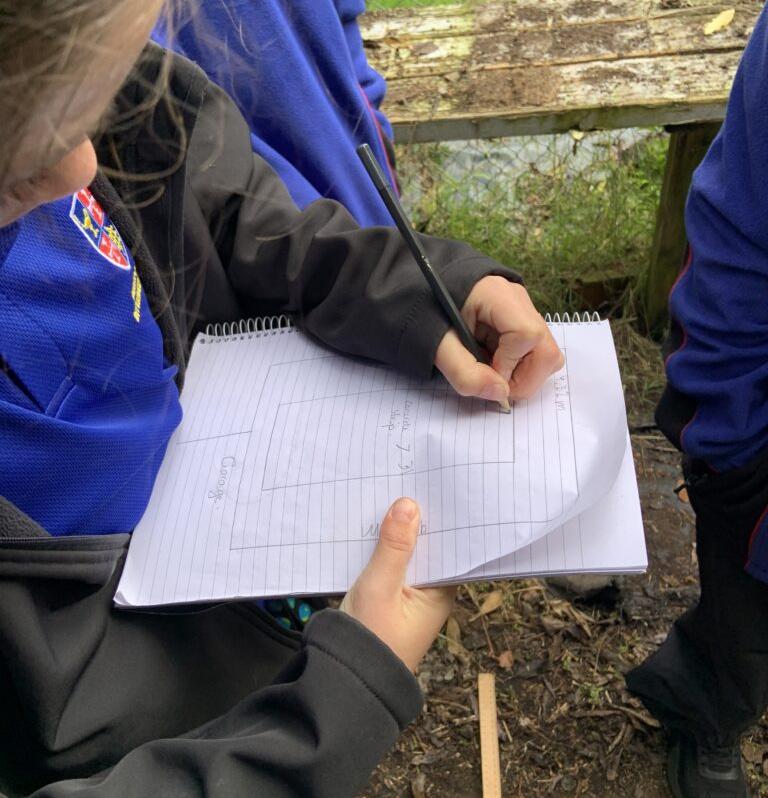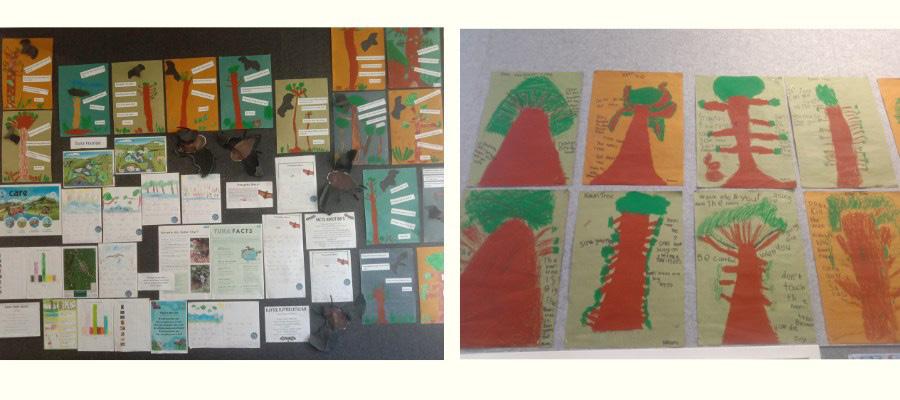
5 minute read
Measuring the mighty: Real-world maths in action
From measuring the girth of ancient kauri trees to calculating the concrete needed for a gully restoration project, Waikato students are taking maths outdoors and applying it to real-life environmental challenges. The Waikato Regional Council’s Kauri Education Experience has reached over 1,000 students, weaving mathematical concepts into environmental education to deepen learning and connection to nature.
Education Gazette thanks Enviroschools and the New Zealand Association for Environmental Education (NZAEE) for sharing these stories of authentic, place-based learning in action.
Learning about Aotearoa New Zealand’s unique trees and conservation issues provides an opportunity for rich maths tasks that are both relevant and engaging.
The Waikato Regional Council’s Kauri Education Experience begins with students exploring their relationship with kauri and identifying the challenges these taonga trees face.
Inside the classroom, facilitators introduce historical and contemporary relationships with kauri, discuss kauri dieback disease, and explore actions to protect this species.
“Who has seen a kauri tree before?” asks a facilitator. Some hands rise, others remain down, revealing varying levels of knowledge. Some schools even discover they have kauri growing within their grounds.
These moments spark excitement and pride. Identifying a kauri in their own school grounds gives students a sense of guardianship and personal connection to the topic at hand. It becomes more than a lesson – it becomes a shared responsibility.
A Wētā Workshop model helps highlight the scale of kauri trees and the threat of Phytophthora agathidicida, the pathogen causing kauri dieback disease. The model, often larger than students expect, provides a visual anchor for understanding just how colossal these native trees are – and how delicate their underground lifelines can be.
Students identify a key challenge: How can we understand the scale of kauri trees and their root systems to better protect them?

Investigating through mathematics
Outdoors, students explore kauri dimensions through handson mathematical activities. Coloured ropes represent the circumferences of famous kauri trees. Students form human circles around these ropes, immediately challenging their spatial understanding.
There is a hum of conversation as students figure out how many classmates it takes to span Tāne Mahuta’s trunk. These physical activities bridge the abstract and the real, turning static numbers into living geometry.
Key mathematical concepts are introduced and linked to the new curriculum’s Investigating situations | Te tūhura pūāhua.
Students plan how to determine the full extent of a kauri’s root zone using proportional reasoning.
“We know the trunk radius, but how far do the branches extend?” prompts the facilitator.
Students estimate canopy radius, then apply the mathematical rule: the root protection zone extends three times beyond the canopy edge. This planning links to Measurement | Ine and Number | Mātauranga tau.
Backed by their measurements and estimations, students move from theory to practice. They pace out the radius and canopy, then extend to three times the canopy radius to represent the root zone. This tangible experience helps students understand why forest track cleaning stations are positioned where they are.
Their growing mathematical understanding becomes a realworld tool for understanding ecological health. Maths is no longer confined to the page; it’s under their feet.
Students rotate through activities: measuring boot-cleaning times, exploring kauri-dependent species, and experiencing Virtual Reality kauri forests. The VR experience provides an immersive look into the biodiversity supported by kauri ecosystems – from birds to fungi – further reinforcing the importance of tree protection.

Connecting maths to kaitiakitanga
Students gather to reflect: “Now that we understand how far kauri roots extend, how does this change how you might behave in a kauri forest?”
There is silence, then thoughtful answers. “I won’t walk off the track.” “I’ll tell others why it matters.”
These reflections mark a shift; the maths has moved from problem-solving to worldview-shaping.
Mathematical relationships reveal conservation insights: circumference-to-radius shows true tree size, the three-times rule shows root system reach, and proportions reveal vulnerability.
Students translate learning into conservation principles: clean footwear, stay on tracks, respect cleaning stations.
This phase of learning bridges maths and real-life behaviour. It challenges students to become environmental stewards, empowered by what they’ve measured and understood.
Classes extend learning through scaled maps, Kauri Protection Plans, or awareness campaigns. In some schools, this even leads to deeper inquiry projects, with students analysing the health of trees in their area or developing signage to inform their communities.
The Waikato Regional Council’s Kauri Education Experience shows how mathematics can be integrated into environmental education, empowering students to connect learning with action.
Maeroa Intermediate’s real-world challenge
A similar approach was embraced by Maeroa Intermediate School, where students took maths outdoors to help plan their gully restoration project.
With funding from the Waikato Regional Council, the school set out to upgrade its native plant nursery by pouring a new concrete pad. Lead teacher Julie Yeoman used this as a real-world maths lesson where students measured the area and calculated the volume of concrete needed.
Students worked in teams, carefully measuring length, width and depth, checking calculations, and applying classroom learning to a genuine environmental project.
The hands-on approach sparked enthusiasm, with students highlighting how much they enjoyed learning maths in a practical way.
Julie says, “The maths practice books are cool, but doing it, with a ruler, outside – that’s real maths.”
The concrete was poured during a working bee, bringing students, families and learning together in a tangible community outcome.
Julie reflects on the power of the experience: “It lets students use what they’ve learned in class and apply it in the real world.”
This hands-on application echoes the same values found in the Kauri Education Experience; linking mathematical thinking to action, and building a lasting sense of purpose and pride.











